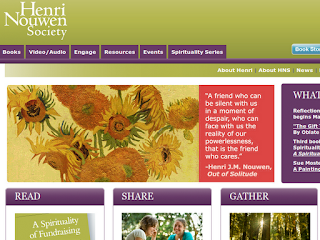What are the best methods for making disciples and planting churches? Are there techniques we can learn, best practices to follow? Becoming a beekeeper is a good analogy. What can go wrong and how do we get it right?Ross Rohde asks some good questions at the end of his most
recent blog post. Ross describes three patterns guiding the way we work. He invites his readers to choose one of the questions and respond. I recommend Ross's article, refer to it for more detail. Also take a look at Felicity Dale's post '
Principles or techniques?'
Question and answer - I've chosen the question, 'Do you think we can do ministry Jesus style just by following the pattern ourselves or treating it as one more technique? Is the pattern itself enough?'
My answer is that doing what Jesus did is not enough. The gospels contain plenty of examples of what he does, and those examples form a clear and striking pattern. But underlying the pattern and the examples is a fundamental cause.
If we can identify the cause that drives and motivates Jesus and adopt that as our own we will be well on the way to doing what Jesus did. It's not just a matter of copying specific examples, it's a matter of understanding the underlying principles.
The beekeeper - An example may help. A beekeeper collects honey, stores it in jars, and sells the honey to make a living. Let's suppose we want to become a beekeeper. One strategy would be to watch a beekeeper at work, note down the pattern of behaviour we see, and then follow the pattern.
He has wooden boxes in his garden, painted white. He has bees inside the boxes. He wears white overalls, gloves, and a hat with netting over it. He opens the boxes and takes out honey. He puts the honey into jars and labels them. He sells his honey to the local shopkeeper. That all seems quite easy!
Right, let's get started! We buy some timber and nails, knock up a few boxes and paint them white. Then we head out into the garden with a net to catch some bees. After a few hours work we've collected quite a few bees and we manage to get most of them into one of the white boxes. How long should we wait for the bees to make some honey? Hmm, we'll give them a week...
Next week we open the box. There is no honey to be seen, but there are quite a few dead bees.
What went wrong? We didn't understand the principles of beekeeping. If we recognise our ignorance we have a chance to do so much better. How can we get the knowledge we need? Let's go and ask a beekeeper!
Apprenticeship - The beekeeper chuckles at our story but commends us for making the attempt. He offers to train us in beekeeping. Expecting a college course we are surprised when he tells us that instead we are to come and work with him. Over the next year we watch what he does, ask questions, listen to what he tells us, and get a chance to try all the necessary tasks while he watches us and corrects our mistakes. We are apprentices. Not only do we learn to look after bees and make jars of excellent honey, we also have a lot of fun together and become close friends of the beekeeper. We are apprentice beekeepers.
It's just the same with Jesus. It's not about copying a pattern, Jesus
is the pattern! We must follow Jesus because he is the expert and we are apprentices (disciples). We would be seriously mistaken if we thought we could simply follow a method. A method is the same series of actions repeated every time. Here are the actions we must repeat again and again if we are following Jesus.
- Watch and do
- Listen and speak
Jesus says that he does only the things that he sees his Father do. He says only the things he hears the Father say. So watching, listening and obedience must be key to all we do (as with any apprenticeship).
So let's stop following mere patterns of behaviour, formulas and techniques. Instead let's begin by watching and listening. Then we can start doing and speaking what Jesus shows us and says to us. When I know him well in my heart and mind I will always be watching and listening, then I will be able to carry his life and love and purpose into the world.
If there is any pattern for us to follow it is Jesus himself.
From the archives - More articles on
listening.
 This list below includes my own articles about online tools and Frank Viola's material on locally installed software.
This list below includes my own articles about online tools and Frank Viola's material on locally installed software.





